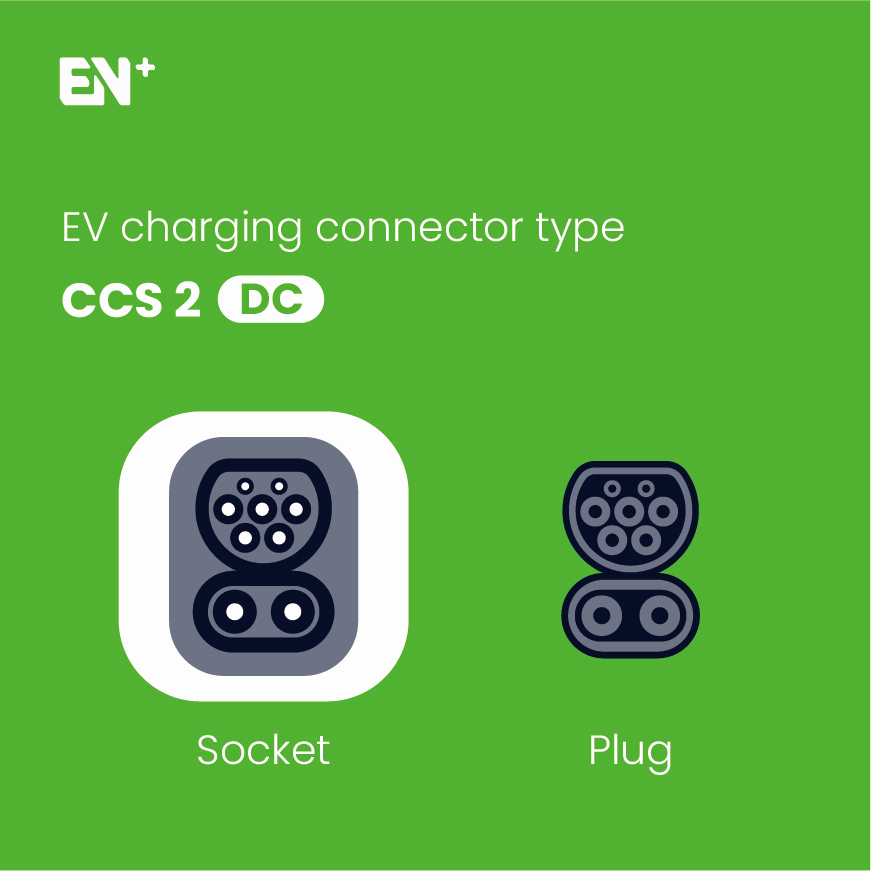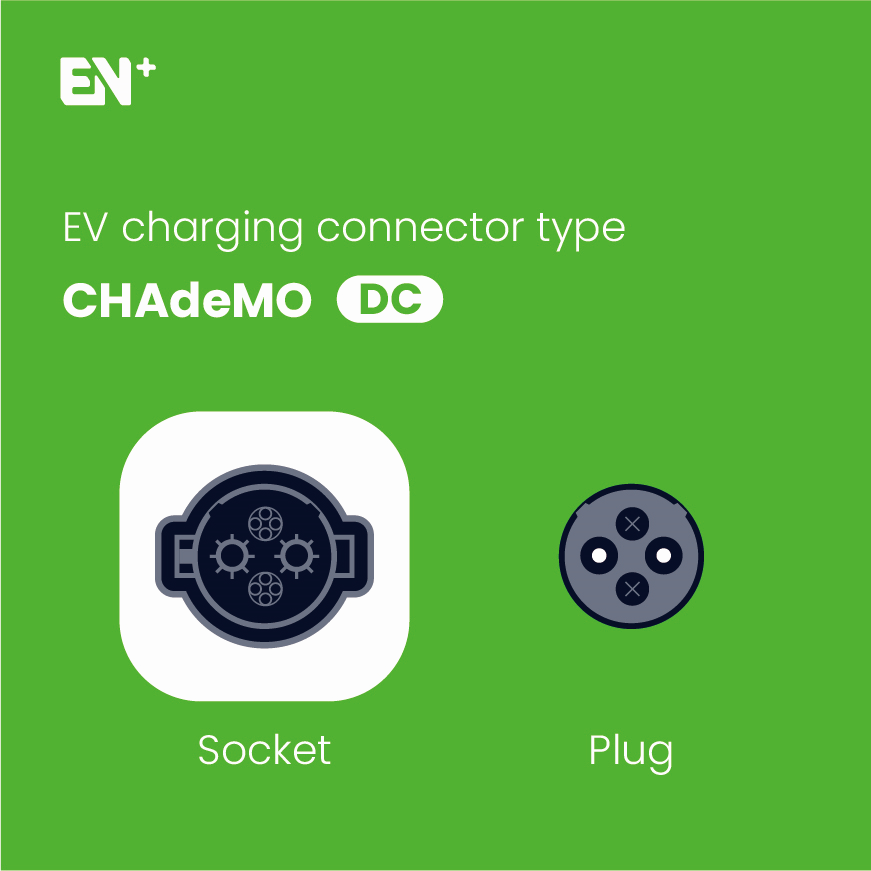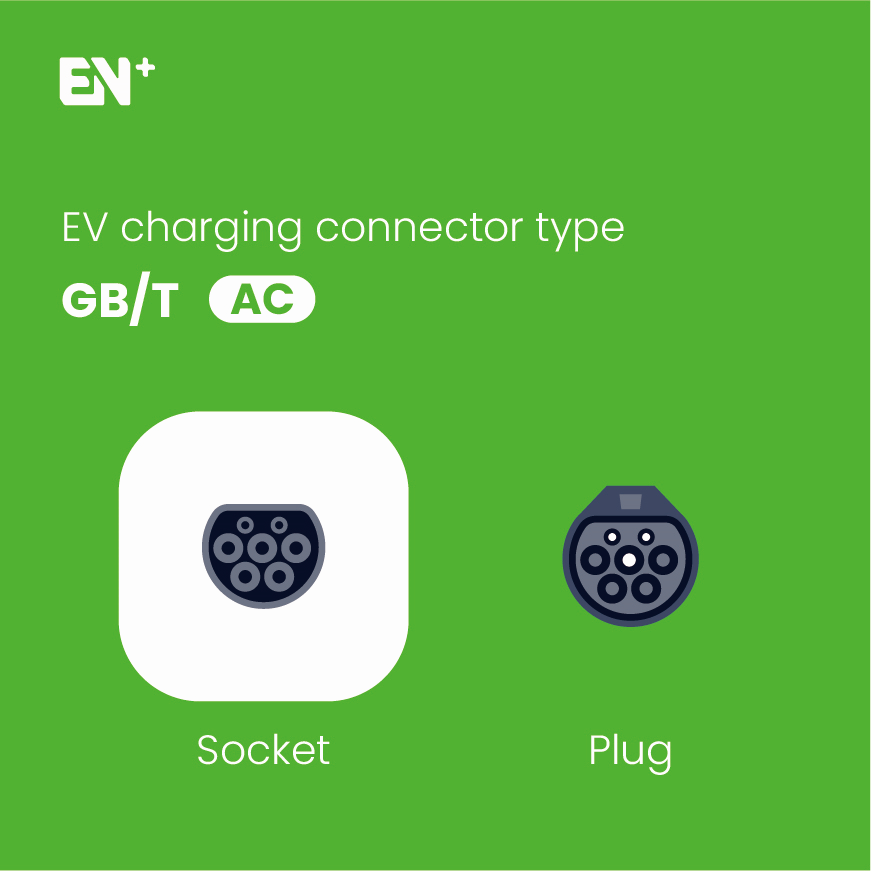As the demand for environmentally-friendly transportation options increases, electric vehicles (EVs) are gaining popularity worldwide. However, one of the biggest challenges for EV owners is the availability of compatible charging stations. This is due to the fact that there are various types of connectors used for EV charging, and not all connectors are compatible with all EV models.
Therefore, it is crucial for EV owners, charging station providers and installers, and policymakers to have a comprehensive understanding of the different EV charging connectors, sockets, and plugs available worldwide. This guide will provide an in-depth yet accessible overview of the topic, including the differences between available electric vehicle connector types, which countries they are used in, and how fast they charge.
In this blog, we will discuss 7 types of EV charging connectors worldwide. This is shown in the illustration below.

TYPE1- SAE J1772
The Type 1 connector, also known as SAE J1772, is a widely used standard EV charging connector in North America, featuring a five-pin design and a maximum charging capacity of 80 amps with 240 volts input.
In North America, the Type 1 connector is the standard for Level 1 and Level 2 charging stations, except for Tesla vehicles, which utilize a proprietary connector. However, Tesla drivers can use a Tesla connector adapter to charge their EVs at non-Tesla stations with a Type 1 connector.
The Type 1 connector is commonly found in public charging stations and is also suitable for home charging stations, making it a convenient and universal option for EV owners in North America. Its compatibility with most EV models produced by major automakers such as Chevrolet, Ford, and Nissan makes it an essential component of the EV charging infrastructure.
| EV Connector Type | Type 1 (SAE J1772) |
| Output Current Type | AC (Alternate Current) |
| Supply Input | 120 Volts or 208/240 Volts (Single-phase only) |
| Maximum Output Current | 16 Amps (120 Volts) 80 Amps (208/240 Volts) |
| Maximum Output Power | 1.92 kW (120 Volts) 19.2 kW (208/240 Volts) |
| EV Charging Level(s) | Level 1, Level 2 |
| Primary Countries | USA, Canada |

TYPE 2 – MENNEKES
The Type 2 connector, also known as the Mennekes connector, is a widely used charging standard for Electric Vehicles (EVs) in Europe. It features seven pins and can handle up to 32 amps of current at 400 volts input, providing a maximum power output of 22 kW. This high-power output allows for quick and efficient charging of EVs.
One of the most significant advantages of the Type 2 connector is its ability to support both single-phase and three-phase AC charging for Level 2 chargers. This feature makes it suitable for a wide range of EVs, from small city cars to larger vehicles with higher energy demands.
Additionally, the Type 2 connector is compatible with most public charging stations across Europe, making it an ideal choice for long-distance travel.
The plugs of the Type 2 connector have openings on the side that allow them to lock into place automatically when connected to the EV for charging. This automatic locking mechanism ensures that the plug stays securely connected to the EV during the charging process, preventing accidental disconnection. This feature is particularly useful when charging in public places where the charging cable can be prone to being accidentally unplugged.
| EV Connector Type | Mennekes (Type 2) |
| Output Current Type | AC (Alternate Current) |
| Supply input | 230 Volts (Single-Phase) or 400 Volts (three-phase) |
| Maximum Output Current | 32 Amps (230 Volts) 32 Amps (400 Volts) |
| Maximum Output Power | 7.6 kW (230 Volts) 22 kW (400 Volts) |
| EV Charging Level(s) | Level 2 |
| Primary Countries | Europe, United Kingdom, Middle East, Africa, Australia |
Type 1 and Type 2 EV connectors utilize a common signaling protocol for communication between the EV charger and the vehicle. This allows electric vehicle manufacturers to streamline their production process by using a standardized approach. During the final stage of production, the appropriate EV connector is added based on the specific market where the vehicle will be sold.

CCS 1
CCS Type 1 is a popular DC fast charging standard for electric vehicles in North America. It combines the J1722 Type 1 plug with two high-speed DC fast charging pins and can deliver a maximum power output of 360 kW with up to 500 amps and 1000 volts DC. One of the benefits of the CCS Type 1 connector is that it utilizes the same communication protocol as the SAE J1772 Type 1 connector. This allows vehicle manufacturers to have a single AC and DC charging port, streamlining the production process.
Most electric vehicles in North America now use a CCS 1 plug, and Japanese automakers like Nissan are transitioning to CCS 1 for all new models in the region. However, Tesla continues to use its proprietary charging standard for North America.
| EV Connector Type | CCS 1 |
| Output Current Type | DC (Direct Current) |
| Supply Input | 480 Volts (three-phase) |
| Maximum Output Current | 500 Amps |
| Maximum Output Power | 360 kw |
| Maximum Output Voltage | 1000 Volts DC |
| EV Charging Level(s) | Level 3 (DC fast charging) |
| Primary Countries | USA, Canada, South Korea |

CCS 2
The CCS Type 2 connector, also known as the CCS Combo 2, is the primary DC fast charging standard used in Europe. It combines the Mennekes Type 2 plug with two high-speed charging pins, providing a maximum power output of 360 kW with up to 500 amps and 1000 volts DC.
One of the benefits of the CCS Type 2 connector is its compatibility with most electric vehicles in Europe, including those from popular manufacturers like BMW, Volkswagen, and Audi. The CCS connector’s ability to provide both AC and DC charging makes it a versatile option for EV drivers. Tesla Model 3 and Model Y owners in Europe can charge their vehicles with a CCS Type 2 charging station, while Tesla Model S and Model X owners can use an adapter. This allows Tesla owners to take advantage of the extensive network of CCS charging stations across Europe, providing more convenience and flexibility for long-distance travel.
| EV Connector Type | CCS 2 |
| Output Current Type | DC (Direct Current) |
| Supply Input | 400 Volts (three-phase) |
| Maximum Output Current | 500 Amps |
| Maximum Output Power | 360 kW |
| Maximum Output Voltage | 1000 Volts DC |
| EV Charging Level(s) | Level 3 (DC fast charging) |
| Primary Countries | Europe, United Kingdom, Middle East, Africa, Australia |

CHAdeMO
The CHAdeMO standard was launched by the Japan Electric Vehicle Association and the Japan Electric Vehicle Charging Association in March 2013. The original CHAdeMO standard provides up to 62.5 kW of power via a 500V 125A DC supply, while the second version of CHAdeMO supports speeds of up to 400 kW. The ChaoJi project, a collaboration between the CHAdeMO agreement and China, is even capable of 500 kW charging.
One unique feature of electric vehicles with the CHAdeMO charging method is that the charger plugs are divided into two types: regular charging plugs and fast charging plugs. These two types of plugs have different shapes, charging voltages, and functions. This allows for greater flexibility in charging options for EV drivers.
However, CHAdeMO is less common in North America, with most EVs in the region now using the CCS Type 1 connector. Some Japanese automakers like Nissan still offer CHAdeMO charging options for their electric vehicles in North America, but the standard has been largely surpassed by the CCS and Tesla charging standards in the region.
| EV Connector Type | CHAdeMO |
| Output Current Type | DC (Direct Current) |
| Supply Input | 400 Volts (three-phase) |
| Maximum Output Current | 400 Amps |
| Maximum Output Power | 400 kW |
| EV Charging Level(s) | Level 3 (DC fast charging) |
| Primary Countries | Japan |

GB/T
In China, two types of GB/T connectors are used for EV charging: one for AC charging and the other for DC fast charging. The GB/T AC connector looks like the Mennekes plug and provides up to 7.4 kW of power with a single-phase input. The GB/T DC connector is designed for fast charging and can deliver an impressive 237.5 kW of power.
Currently, a new version of the GB/T charging standard is being developed in partnership with the CHAdeMO Association, which could deliver up to 900 kW. This new version, called ChaoJi, uses liquid-cooling technology and a smaller diameter cable to enable DC charging with over 500 kW. The locking mechanism has also been removed from the connector to the vehicle side, making it more compact and lightweight. With strong interest from electric vehicle markets such as India and South Korea, ChaoJi has the potential to rival CCS2 as the dominant charging standard in the future.
| EV Connector Type | GB/T (AC) | GB/T (DC) |
| Output Current Type | AC (Alternate Current) | DC Direct Current) |
| Supply Input | 250 Volts (three-phase) | 440 Volts |
| Maximum Output Current | 32 Amps | 250 Amps |
| Maximum Output Power | 7.4 kw | 237.5 kw |
| EV Charging Level(s) | Level 2 | Level 3 (DC fast charging) |
| Primary Countries | China | China |


NACS
The North American Charging Standard (NACS) is a standard for electric vehicle charging developed by Tesla. Since 2012, all Tesla vehicles in the North American market have used this standard, and it was opened to other manufacturers in 2022. It can deliver up to 250 kW of power output, providing a full charge in as little as 30 minutes.
Tesla’s proprietary Magic Dock connector allows almost all EVs to charge using NACS or CCS1. Currently, most of Tesla’s Superchargers in North America offer NACS, which is the most common charging standard in the region. According to Tesla, NACS is a mature technology that has been in operation for ten years, providing up to 1MW of DC charging power. The number of NACS charging stations in the Tesla Supercharger network is 60% greater than the total number of all charging networks equipped with CCS interfaces.
| EV Connector Type | Tesla NACS |
| Output Current Type | AC / DC |
| Supply Input | Single or three-phase |
| Maximum Output Current | 48 Amps (AC) 400 Amps (DC) |
| Maximum Output Power | 250 kW |
| EV Charging Level(s) | Level 2 / Level 3 |
| Primary Countries | USA, Canada |
Looking to charge your electric vehicle but feeling overwhelmed by the variety of charging cables and plug types available? Don’t worry, we’ve got you covered. At EN Plus, we offer charging stations that are compatible with the most common connector types, making it easy for you to charge your EV hassle-free.
Our AC charging stations are equipped to accommodate both Type 1 and Type 2 connectors, which are widely accepted standards across numerous countries. Moreover, our fast chargers are designed to be compatible with CCS1, CCS2, and/or CHAdeMO connectors. Thus, regardless of the make or model of your electric vehicle, you can rely on EN Plus for a reliable and convenient charging solution.
We are committed to delivering quality service and always prioritize our customers. If you have any queries or require further assistance, please feel free to reach out to us. We look forward to serving you.


